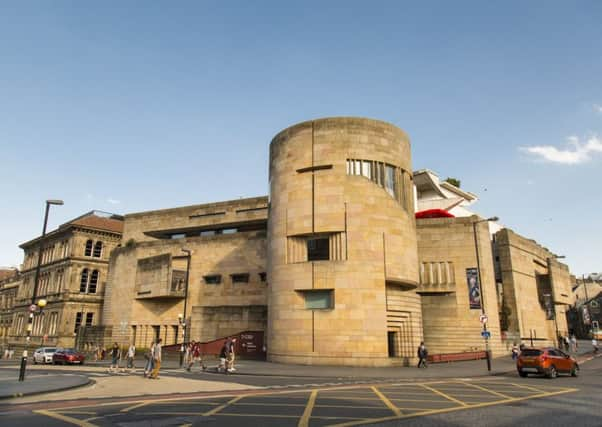On this day in 1998: National Museum of Scotland opens in Edinburgh


Designed by architects Benson and Forsyth, it was a realisation of a modern vision for a future component of the amalgamated National Museums of Scotland, housed in a Morayshire sourced Clashach sandstone building.
It was hailed as an architectural gem when it opened on St Andrew’s Day, 1998, at an estimated cost of £45 million.
Advertisement
Hide AdAdvertisement
Hide AdIt brought together, for the first time, a sequence of Scottish history spanning thousands of years using the objects in its collection to tell the story of Scotland from geological beginnings to the present, arranged chronologically from basement to roof.
This Scottish History and Archaeology collection had previously been housed at the Museum of Antiquities on Queen Street, which is now the Portrait Gallery.
When the collection amalgamated with the adjacent Royal Scottish Museum in 1985 it created what is now known as the National Museums Scotland – the largest multi-disciplinary museum in Scotland.
Today the 1998 building houses over 12,000 objects and since opening 20 years ago has had millions of visitors.
Advertisement
Hide AdAdvertisement
Hide AdHistory aficionados can start their journey exploring the first three billion years of Scotland’s history from the origins and evolution of the landscape, flora and fauna before moving upwards to meet the men and women of prehistory.
This gallery explores how people lived from around 8000 BC to AD 1100 with every object displayed retaining a connection with a person or community, yet there is virtually no trace of these prehistoric people as individuals. Instead, their missing faces are represented by abstract figures sculpted by Sir Eduardo Paolozzi.
Moving up a level, Kingdom of the Scots follows Scotland from its emergence as a nation around 1100 to 1707, showcasing the legends of Scottish history from William Wallace and Robert the Bruce to Mary, Queen of Scots and some of the museum’s most precious objects including the Queen Mary harp and the famous Lewis chessmen. Next, visitors are led through the changing face of Scotland’s progression from medieval society to an urban, modern one.
The mighty steam locomotive Ellesmere forms a highlight on levels four and five for Industry and Empire, which explores how life in 19th century Scotland was moulded by industrial development.
Advertisement
Hide AdAdvertisement
Hide AdAnd just under ten years since it first opened, a new gallery, Scotland: A Changing Nation, was opened on the top floor, tracing the experiences of people living and working in 20th century Scotland through five major themes: war, industry, daily life, emigration and politics.
Connected with the 1861 Royal Museum building, re-opened to much fanfare in 2011, the Museum of Scotland combined to form National Museums of Scotland in 2006 along with the National Museum of Flight, the National Museum of Rural Life, the National War Museum and the National Museums Collection Centre, which contains a staggering 12 million items and the largest body of curatorial and conservation expertise in the country. Director of National Museums Scotland Dr Gordon Rintoul, said: “On St Andrew’s Day 1998 the Scotland galleries of the National Museum of Scotland were opened to widespread acclaim, presenting an unrivalled insight into Scotland’s rich history and culture. Since then, the displays are updated on an ongoing basis with numerous acquisitions as we continue to collect important material from Scotland’s past and present. The National Museum of Scotland as a whole has gone from strength to strength and on February 8, we conclude the 15 year, £80m transformation of the Victorian part of the museum. Over that period, the National Museum has become the most popular visitor attraction in the UK outside London.”
